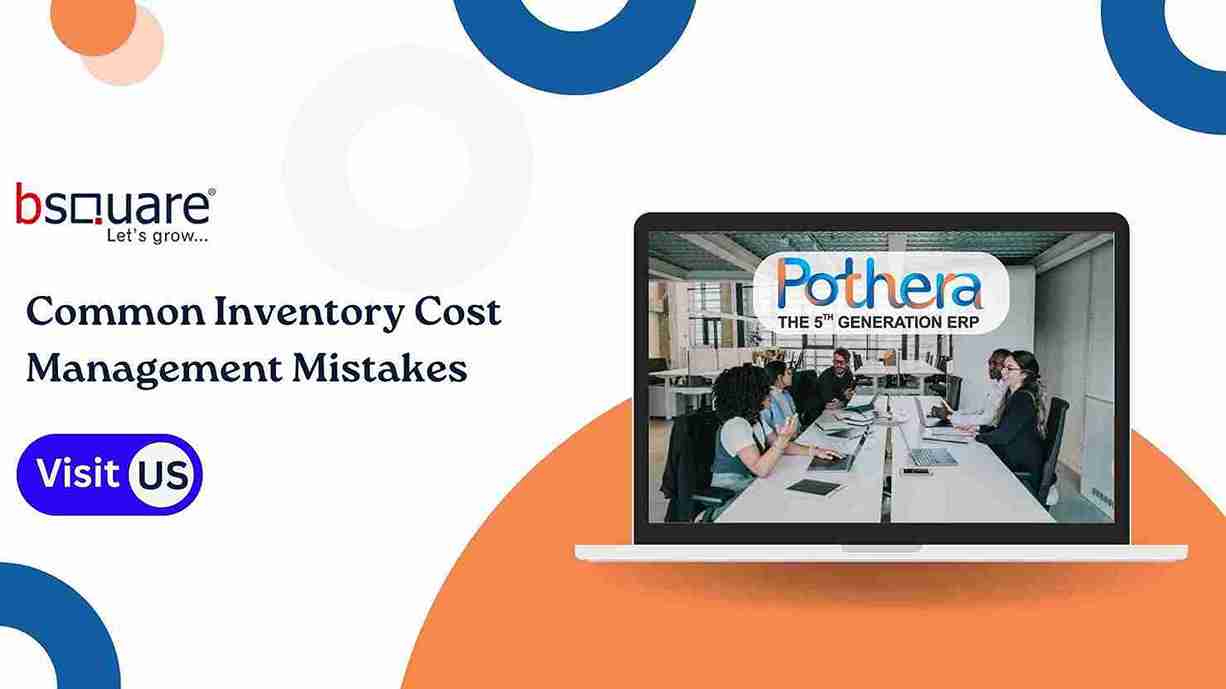- Over-estimation of Demand
Leads to obsolescence and cost of holding/spoilage.
Solution: Use reasonable packages of forecasting and sales history. - Under-emphasis of Inventory Turnover
Slow turnover = high levels; rapid turnover = repeated stockouts.
Solution: Monitor turnover ratios and turn stock regularly. - Over-estimation of Stockout Costs
Lost business and customer frustration drain revenue.
Solution: Hold safety stock and monitor reorder points. - Overshooting Spoilage
Lost inventory is the true loss.
Solution: Enforce FIFO policies and monitor shelf life. - Manual Inventory Control
Susceptible to inefficiency and man error.
Solution: Automate with inventory control software. - Poor Supplier Management
Cost increases because of inefficient supplier performance.
Solution: Audit contracts and stabilize suppliers. - Incorrect Inventory Data
Results in bad decisions and costly mistakes.
Solution: Audit frequently and maintain clean data. - Pricing Without Cost Insight
Failing to provide for cost of inventories decreases margins.
Solution: Cost accounting for inventories takes in all costs into price formulas. - Ignoring Market Forces
Trends and economic and seasonal cycles, control demand.
Solution: Keep up-to-date and re-engineer inventory operations to adapt. - Static Inventory Procedures
Aging procedures delay efficiency.
Solution: Re-design policies regularly to remain flexible and competitive.
Proven Strategies to Lower Inventory Costs
- Improve Demand Forecasting
Employ statistics and past experience to effectively estimate demand. This avoids overstocking, holding cost, as well as stockout. - Implement Just-in-Time (JIT)
The imports or the material should be received only when needed. JIT minimizes the requirement for storage and holding cost. It is subject to the coordination with the suppliers and guaranteed delivery dates. - Apply Economic Order Quantity (EOQ)
EOQ is utilized for determining the optimal order quantity that optimizes ordering and carrying cost, and keeps inventory at a satisfactory level. - Create Supplier Relationships
Good supply relationships can lead to better terms, lower ordering costs, and regular deliveries. Monitor performance at regular intervals and renegotiate better deals. - Use ABC Analysis
Value-code and turn-speed divide inventory into A, B, C classes. Higher control must be put on high-value (A) items and best control on low-value items. - Reduce Lead Times
Decreased lead times decrease safety stock. Simplify procurement procedures and negotiate with suppliers to receive products quickly. - Use Technology and Automation
Computer programs for inventory improve tracking, forecasting, and replenishment. Minimizing error by using real-time data improves decision-making. - Use Lean Principles
Lean inventory minimizes waste and excess. Use ongoing improvement and process elimination like overproduction and redundant storage. - Inspect Safety Stock Levels Periodically
Analyze safety stock against current demand and supply variance. Avoid overstocking without sacrificing service level. - Use Consignment Inventory
Under this category, the property belongs to the suppliers during the life of the product. This reduces holding costs and maximizes cash flow. - Regular Audits
Regular audits ensure accuracy, reduce shrinkage, and clear record discrepancies. - Drop Shipping Considerations
Where there is drop shipping, the suppliers ship the products directly to customers. There is no warehousing requirement, and capital is conserved.
How AI Makes Inventory Cost Management Easier
Best ERP software company in India – AI provides strong real-time data with demand forecasting, cost tracking, and dynamically re-adjusted reorder points. It reduces overstock, streamlines stockout, and adjusts safety stock all to drive better cash flow, lower carrying costs, and higher profitability.
Maximize Inventory Spend with Pothera ERP
Manufacturing inventory software – Pothera ERP helps organizations minimize the cost of inventory and maximize with automation, real-time visibility, and intelligent analytics.
Key Features & Benefits:
- Automated Inventory Management
Manages the inventory quantity, replenishes it automatically, and handles multi-location inventory in a manner that reduces excess inventory and carrying cost. - End-to-End Real-Time Visibility
Offers end-to-end real-time visibility into the inventory and prevents loss by stockout or overstock. - Demand Forecasting
Obtains future demand from history and trend, maintains optimum level of inventory and prevents safety stock. - Order Management
Coordinates vendor schedules and orders to be purchased to minimize cost and purchase time. - Valuation & Reporting
Prevents stale or slow-moving inventory, minimizing waste and carrying cost. - Accounting Integration
Connects finance and inventory for sophisticated cost planning and control. - Shrinkage & Spoilage Control
Prevents theft, damage, or expirations, reducing loss. - Mobile Access
Enables anytime, anywhere management of the inventory to make decisions in real time.
What are the most common inventory costing methods? By implementing Pothera ERP, business companies are able to have tighter control over the inventory, minimize their operating expense, and improve as an organization.

